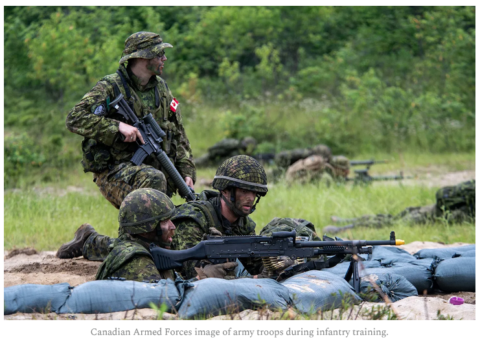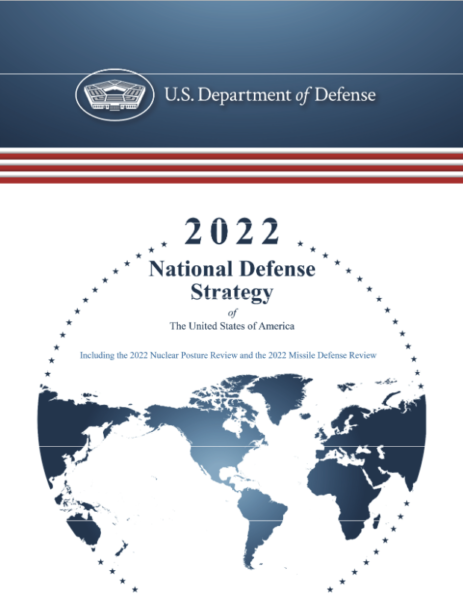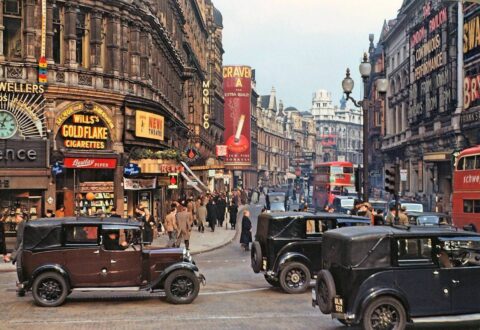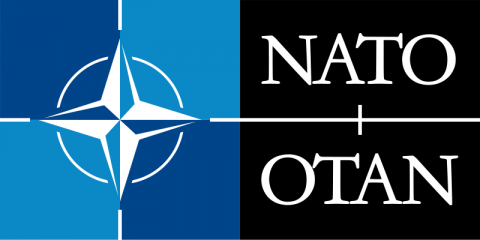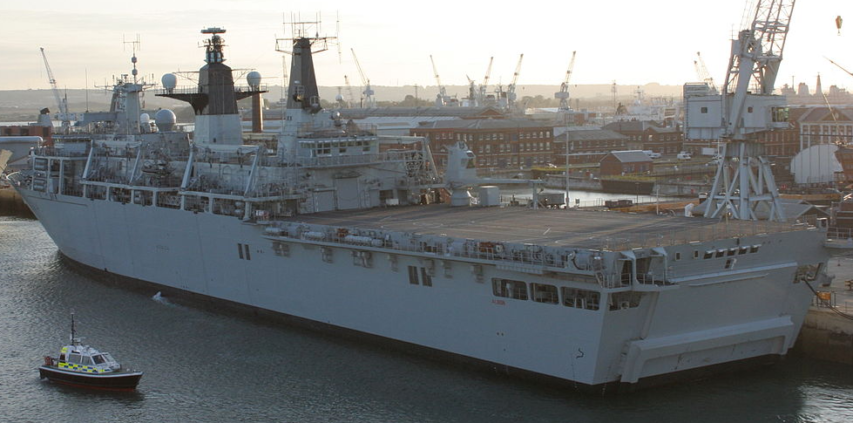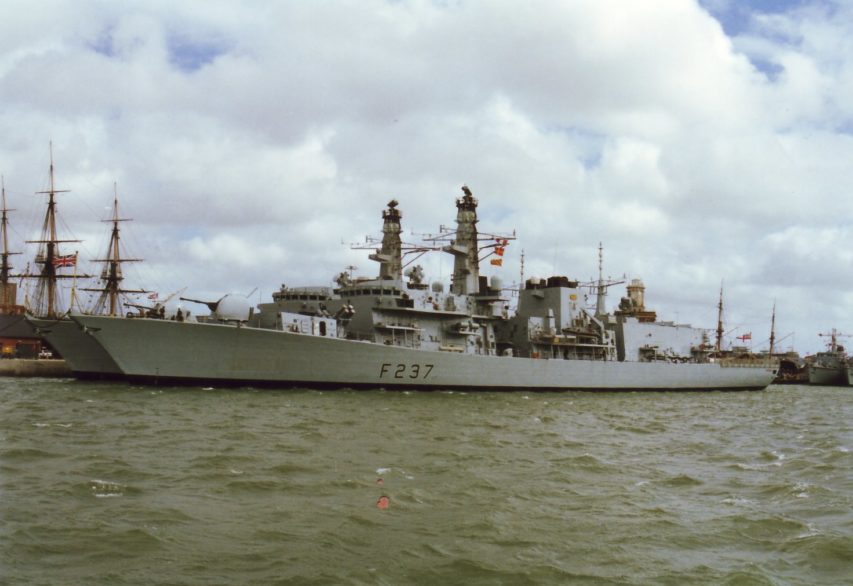So why is there such a big disconnect in the media? Why are there headlines about cutting and slashing when government is growing by every possible measure?
For the simple reason that the budget process in Washington is pervasively dishonest, as I’ve explained in interviews with John Stossel and Judge Napolitano. Here are the three things you need to know.
- The politicians created a system that automatically assumes big increases in annual spending, called a baseline.
- When there’s a proposal to have spending grow slower than the baseline, the gap between the proposal and the baseline is called a cut.
- It’s like being on a diet and claiming progress because you’re gaining two pounds each month rather than five pounds.
Defenders of this system argue that programs should get built-in increases because of things such as inflation, or because of more old people, which leads to more spending for programs such as Social Security and Medicare.
It’s certainly reasonable for them to argue that budgets should increase for these reasons.
But they should be honest. Be forthright and assert that “Spending should climb X percent because …”
Needless to say, that won’t happen. The pro-spending politicians and interest groups like the current approach because it allows them to scare voters by warning about “savage” and “draconian” spending cuts.
Daniel J. Mitchell, “The Media’s Pervasively Dishonest Coverage of Trump’s New Budget”, International Liberty, 2020-02-10.
January 25, 2025
QotD: “Big budget cuts!”
December 8, 2024
President Hindenburg dissolves the Reichstag – Rise of Hitler 07, July 1930
World War Two
Published 7 Dec 2024July 1930 sees the Weimar Republic facing unprecedented turmoil. From Brüning’s budget crisis and the Reichstag‘s dissolution to Nazi and Communist clashes with state governments, Germany braces for a pivotal election in September. This episode unpacks the month’s chaos, political maneuvers, and the rising tensions tearing the Republic apart.
(more…)
November 21, 2024
Canadian defence priorities – don’t listen to what they say, watch what they spend the money on
The Hub provides an edited transcript of what retired Lieutenant General Andrew Leslie (and former Liberal whip in the Commons) said to the Standing Committee on National Defence earlier this month, which shows very clearly where national defence ranks in Justin Trudeau’s world:
My intent is to offer some criticism of the status quo so that we can learn and then perhaps some sort of question period to get into some solutions. Essentially, in my opinion, “Strong, Secure, Engaged“, the precursor to the current defence policy, delivered nothing substantive in terms of modern military equipment, which saw Canada, in fact, become weaker, more insecure, and essentially absent from the deployable stables of troops required for either United Nation missions, or, of course, NATO.
The 2024 defence policy update of “Our North, Strong and Free” is no better, unfortunately, in that it promises some urgently needed equipment years from now, but nothing today. Indeed, the 2024 defence spend will be less than that of 2023. Of course, we’re well aware of what just happened down [in the] United States. Both Republicans and Democrats are united and increasingly vocal about telling Canada how disappointed, frustrated and fed up they are with Canada’s failure to defend itself and their allies, with a special mention on the Arctic.
Meanwhile, as we know, and I was involved in the last NAFTA renegotiations, that’s coming due at a time when a variety of key players down south have articulated clearly the base of 3 percent [of GDP spending on defence] looms on the horizon, and how defence, security, trade, and border security are all intertwined. At this time of crisis internationally, with what’s happening in the Middle East, in Ukraine, Canada’s military readiness is at its lowest level in 50 years. Canada spent last year, in 2023, more money on consultants and professional services than it did on the Army, Navy, and Air Force combined — which quite frankly, is madness.
The Army has over 50 percent of its vehicle fleets, which are awaiting spare parts and technicians. The Navy is struggling mightily — bless them — to keep elderly warships, a handful of them at sea, specifically in the Indo-Pacific, and they’re desperately short of trained sailors. The Air Force has been unable to participate in significant NATO deterrent exercises, either up north or over the oceans, in conjunction with our friends and allies, because they don’t have the pilots, the spare parts, or the money to fly the aircraft.
In the Arctic, which is many times larger than Europe, Canada has fewer than 300 military support staff who are not a deterrent — they’re essentially unarmed. Some of them are part-time, bless them, and about 1,600 Ski-Doos equipped with rifles, and Canadian Rangers who are not combatants. Their role is to observe and report.
The bottom line is that Canada has no permanently assigned combat elements to deter potential presence by the Russians or the Chinese, who are showing up in our waters with increasing frequency. But other people do. Russia specifically has between 25,000 to 35,000 combat troops deployed in their Arctic with huge amounts of operational equipment — air, land and sea. The United States, bless them, has 22,000 full-time military and part-time military professionals with more equipment than the entirety of the Canadian Forces in terms of combat delivery. So really, thank you America for defending our Arctic.
We are facing unprecedented dangers and challenges, and quite frankly, I see no sense of urgency to change, to modify, to re-guide the efforts of the government towards supporting and assisting in the Canadian Forces.
Some facts. We have less than 35 military personnel deployed on UN missions; in 2003, we had close to 2,500. We are the only NATO nation whose level of military operational readiness is going down when everyone else is skyrocketing up. We have the longest and least efficient procurement system in NATO; indeed, in any nation that I can find. We are the only nation in NATO that does not have a costed plan to get to 2 percent of GDP, which was first agreed to by the minister of defence in 2008 and reiterated in 2014, 2015, 2016, 2017, and I could go on. We are the only NATO nation whose defence minister has publicly admitted that he could not convince his fellow cabinet members of the importance of NATO defence spending, and the 2 percent GDP. And, as mentioned already, we’re the only NATO nation whose defence budget decreased this year.
Emphasis mine.
November 17, 2024
Nazi Uniforms banned across three States – Rise of Hitler 06, June 1930
World War Two
Published 16 Nov 2024In June 1930, the Weimar Republic faces escalating tensions as Nazi uniforms are banned in three states to curb political violence. The French withdrawal from the Rhineland marks a major milestone while Saxony’s elections leave the state in political deadlock. Meanwhile, Chancellor Brüning battles to save his government amidst growing financial turmoil and party divisions.
(more…)
August 11, 2024
Canada’s long-standing issues with national defence won’t be fixed by merely spending more money
In The Line, Greg Quinn explains why meeting the 2% of GDP NATO target for military spending isn’t going to solve Canada’s problems with the military:
Canada isn’t pulling its weight on defence. Is that what Canadians want? Because it isn’t what its allies want. And the allies are more and more willing to say so.
Canada, and Prime Minister Justin Trudeau, likes to talk about how the country punches above its weight in NATO and global affairs more generally. It’s a cliché many countries have resorted to when put under pressure on one issue or another. (And I’ll confess that this includes my own United Kingdom, which I served as a diplomat for decades before my recent retirement.)
It’s also smoke and mirrors, which in Canada’s case on defence, hides an unhappy truth — Canada doesn’t pay its way.
Trudeau says Canada will meet the target of spending two per cent of GDP on defence in 2032. Some 18 years after NATO committed to it. At the moment Canada spends a paltry 1.37 per cent, or some $33.8 billion a year, on defence, damn near the bottom among the allies, in percentage terms. Ottawa claims this will increase to 1.76 per cent, or $49.5 billion, by 2030. If so, that will move Canada up a whopping two places to 25th.
Mind you, the Parliamentary Budget Office disputes even this, stating that Canada’s defence spending will peak at 1.49 per cent of GDP in 2025-26 before dropping (yes, dropping) to 1.42 per cent in 2029-30. Somebody is being economical with the truth.
[…]
The bottom line is simple — what does Canada (and the Canadian people) want its role in the world to be? Words are easy but they need to be backed by action. One of the most obvious demonstrations of action is spending on a defence force that is capable of deploying and acting on the global stage. More bluntly, of fighting and defeating a near-peer enemy as part of a coalition of allies.
If Canada doesn’t want to do that and prefers a defence force that is essentially a glorified local militia that focuses on domestic issues, well, fine. But let’s not pretend it is anything else. Let’s not talk about how much of a force for good Canada is in the world and let’s not try and fool Canada’s allies. They’re not as stupid as Canadian politicians want them to be.
And let’s not expect those allies to happily accept the situation and continue on as if nothing has changed. Canada already complains about being left out of AUKUS. Is it any wonder? More of that should be expected. If you don’t play the game and don’t pull your weight, then sadly, you don’t get the benefits of being in the grown-ups’ club.
Canadians owe themselves, and frankly owe their allies, an honest discussion about kind of role Canada actually wants to play in the world … and whether they’re willing to actually pay the bills required to play that role. Only after such an honest chat can Canadians, and their allies, calibrate their expectations accordingly.
August 1, 2024
“There is nothing more worn out in natsec discussions coming from the Imperial City than ‘all elements of national power'”
CDR Salamander reads through a recent RAND report on the US National Defense Strategy and has thoughts:
Were you aware this tasker was working its way through the system?
Congress established the Commission on the National Defense Strategy by statute to examine and make recommendations with respect to the National Defense Strategy.
Well, RAND has the goods,
As part of the Commission’s role, it conducted a review of the “assumptions, strategic objectives, priority missions, major investments in defense capabilities, force posture and structure, operational concepts, and strategic and military risks” associated with the 2022 National Defense Strategy (PDF). The Commission called on RAND to provide administrative and analytic support.
Did you catch this yummy little morsel?
The current National Defense Strategy (NDS), written in 2022, does not account for ongoing wars in Europe and the Middle East and the possibility of a larger war in Asia. Continuing with the current strategy, bureaucratic approach, and level of resources will weaken the United States’ relative position against the gathering, and partnering, threats it faces.
Remember this tasty nougat center for later:
… does not account for ongoing wars in Europe and the Middle East and the possibility of a larger war in Asia.
Basically, they’re reminding us that we have a nation’s security running on an obsolete autopilot. Bravo Zulu for putting that marker out early. In a fashion, the report could have ended there. Probably should have ended there, but alas … no.
As Noah Robertson noted in his reporting, this report was not due until the end of the year. However, the commissioners decided to deliver it early so it could be part of the election conversation.
This election cycle has different plans.
While I appreciate the move — one I would have encouraged — I’m not sure either party wants to engage on the topic as there is only so much bandwidth in an election year … and … will you look at what happened in the last month?
However, there is a mission to complete … and they completed it early. There is praise due for that.
[…]
I have … concerns in other foundational issues as well.
There is plenty to chew on and it is a meaty document, so I am just going to touch on a few things in the Summary that I hope will encourage you to dive in for yourself for the details. No one wants me to fisk a 100+ page report.
My primary concern came early when the Balrog of Beltway natsec theory appeared;
In its report, the Commission on the National Defense Strategy recommends a sharp break with the way the U.S. Department of Defense (DoD) does business and embraces an “all elements of national power” approach to national security. It recommends spending smarter and spending more across the national security agencies of government.
In the name of all that is holy. There is nothing more worn out in natsec discussions coming from the Imperial City than “all elements of national power“. The “whole of government” mating with the “interagency”. Yes, yes, yes, we know — the four walls of the food trough. This is not an insight, this is rice bowl protection.
Yawn.
That is just a tell that people were invited inside the tent were very concerned that DOD might get more money and the civilian part of the natsec bureaucracy wouldn’t get an equal plus up of funds. Requirements be damned, we have budget-pie ego issues that need to be addressed.
As the kids would say, “basic“.
Buddha forbid that DOD get $1 and at the same time we don’t give $1 to every other kid at the table. It really is one of the most unimaginative instincts of the established natsec nomenklatura.
As we’ll see again, this DC habit of holding defense spending hostage for “less icky” levers of power or petty domestic programs making everything unaffordable. People tasked with “hard decisions” decide the “hard decision” is to decide to say “yes” to every good-idea fairy that threatens to heavily pout if their #1 goal is not your #1 goal.
If your shields don’t go up, your wallet pushed deeper in your pocket, your eye twitch start, your children hidden, and you don’t instinctively reach for your side-arm when you see a Beltway entity mention, “spending smarter and spending more across the national security agencies of the government” then you have not paid attention the last quarter century.
July 6, 2024
Canada, NATO’s most egregious freeloader
In The Line, Eugene Lang and Vincent Rigby explain why our NATO allies are less and less willing to listen to Canadian virtue-signalling and posturing when we continue to refuse to live up to our commitments on the Canadian Armed Forces and contributing our full share toward NATO operations:
Next week’s NATO Summit in Washington marks the 75th anniversary of the trans-Atlantic Alliance. Yet despite being one of the original 12 founding members, Canada’s credibility within the alliance will be at an all-time low.
There is no question Canada has a proud history with NATO. Canadian statesmen — including Lester B. Pearson, Louis St. Laurent, Hume Wrong and Escott Reid — were architects of the alliance in the late 1940s, and helped author Article Two of the North Atlantic Treaty calling for political and economic collaboration among member-states, the so-called “Canadian Article”.
Over the decades, the Canadian military has made significant contributions to NATO missions in western Europe, the Balkans and Afghanistan. But that was then and this is now, and two years ago, Michel Miraillet, France’s ambassador to Canada, put things bluntly: “You are riding a first-class carriage with a third-class ticket. If you want to remain in the first-class seat, you need to train and expand (the military) and to go somewhere.”
Sentiments like these have been fuelled by Canada’s stubborn refusal to meet NATO’s defence spending target of two per cent of gross domestic product (GDP) — a commitment Ottawa has signed onto twice in the past ten years but is far from achieving. Last year, NATO Secretary General Jens Stoltenberg expressed frustration over this recalcitrance: “Canada has not conveyed a precise date but I expect (it) to deliver on the pledge to invest two per cent of GDP on defence, because this is a promise we all made”.
Stoltenberg’s comments evidently had little impact in Ottawa. While Canada’s recent Defence Policy Update (DPU) placed greater emphasis on the Arctic (NATO’s northern flank) and promised new defence investments, its pledge to increase defence spending to 1.76 per cent of GDP by 2030 fell well short of the NATO target. Canada, currently spending 1.37 per cent of its GDP on defence, remains among only a handful of NATO members which have failed to reach the two per cent threshold and have no plan to do so.
The Defence Policy Update’s silence on this issue did not go unnoticed among allies. Criticism of Canada’s NATO posture reached new heights last month when 23 U.S. senators wrote to Prime Minister Justin Trudeau, stating “we are concerned and profoundly disappointed that Canada’s most recent projection indicated that it will not reach its two percent commitment this decade”. Canadians can be forgiven for failing to recall the last time nearly a quarter of the U.S. Senate wrote to the Canadian government on anything.
It’s well known that Justin Trudeau has no time for military issues, but it’s surprising that he hasn’t done a few things that wouldn’t increase the actual spending on the CAF, but would be “bookkeeping” changes that would shift some existing government spending into the military category, like militarizing the Canadian Coast Guard. (That is, moving the CCG from the Fisheries and Oceans portfolio into the National Defence portfolio, not actually putting armaments on CCG vessels. Something similar could be done with the RCMP, switching it from Public Safety to National Defence with no other funding or operational changes.) That Trudeau hasn’t chosen to make even these symbolic changes shows that he actively opposes fulfilling the commitment his government has made twice in the last ten years for reasons of his own.
May 15, 2024
Canada’s Minister of National Defence says new submarines are “inevitable”
Bill Blair regrets earlier comments that some read as weakening the government’s already feeble commitment to re-equipping the Royal Canadian Navy’s submarine branch:

HMCS Victoria, one of the four submarines currently in service with the Royal Canadian Navy. She was originally commisioned into the Royal navy as HMS Unseen in 1991 and re-commissioned as HMCS Victoria in 2000.
Image via Wikimedia Commons.
Bill Blair, the federal defence minister, made a rare admission of Liberal fallibility in Washington on Monday when he said he regrets using the word “explore” when talking about renewing Canada’s submarine fleet.
Ottawa’s recent defence policy update said the government will “explore options for renewing and expanding the submarine fleet”, a form of words that was criticized for lacking urgency.
“It’s certainly not my intention to be wishy-washy. What I’ve tried to articulate very, very clearly and strongly in the document is, we know we have to replace our submarine fleet, and we’re going to do that,” Blair said.
Replacing the four Victoria-class subs is necessary, he said. “It is, I might suggest, inevitable.”
That is absolutely the case, if Canada is committed to maintaining its submarine capability. The Victoria-class subs date back to the late 1980s and are due to be taken out of service at the end of the 2030s.
Submarines are seen as a crucial defence against incursion by hostile powers, as the polar ice melts and opens up northern waterways. The Northwest Passage is forecast to be the most efficient shipping route between Asia and Europe by 2050.
But Blair admits “there is a lot of work to do”, not least convincing his cabinet colleagues of the “business case for the capability”.
“One of the greatest challenges of being a defence minister is to secure funding and the second one is actually spending it”, he said on Monday.
He gave a sense of the struggles around the cabinet table last month in a speech in Ottawa, where he admitted: “I had to sort of keep on pushing my issue forward about the importance and the need to invest in defence”. He made it sound as if he was a lone voice in the wilderness.
[…]
Retired captain Norman Jolin recently wrote an analysis for the Naval Association of Canada that noted if Canada wants to maintain submarine capability, it needs to place a contract with a proven builder by 2027 at the latest. He said the lack of domestic submarine-building capacity means there is neither the time nor resources to even think about a made-in-Canada solution.
The typical procurement process takes 18 years to get from cabinet approval to delivery, which would mean if an order was placed tomorrow, we wouldn’t get new subs until 2042.
Based on that timeline, “it is clear that the decision to replace the submarines is considerably overdue,” Jolin wrote.
There’s little chance that this will move closer to completion during the remaining life of the current government, with an election due before the end of 2025, and Blair is already on the record emphasizing how little the Liberals would relish spending any money on military equipment even in good economic times. Oddly, the fact that there are no domestic shipyards currently capable of building submarines may be a positive — building the RCN’s ships in Canadian yards always means that each ship costs much more than if the hull is built in a foreign shipyard. Canada doesn’t have the facilities and trained workforce to build naval vessels, so every time a new class of ships is needed, the cost of building/refurbishing the shipyards and hiring and training-from-scratch a new workforce balloons the total cost of the program.
May 4, 2024
Bill Blair – “I couldn’t make a defence policy argument to meet that spreadsheet target of two per cent”
I don’t find it at all surprising that Canada’s current Minister of National Defence hasn’t been able to persuade Justin Trudeau and the rest of cabinet that we should live up to our treaty commitments to our NATO allies. I do find it surprising that he’s allowed to say anything on the topic that implies criticism of Justin’s tame ministers:
This week, Defence Minister Bill Blair made a rare admission for a federal cabinet minister: He said he keeps trying to get the rest of cabinet to fund the Canadian military to NATO standards, but nobody’s biting.
“Don’t get me wrong. It’s important, but it was really hard (to) convince people that that was a worthy goal,” Blair said in a Wednesday address to the Canadian Global Affairs Institute, a foreign affairs think tank.
Blair was speaking specifically about boosting Canadian defence spending to the NATO standard of two per cent of GDP, which he referred to as a “magical threshold”.
“Nobody knows what that means, they didn’t know how much that is and they didn’t know what we were going to spend money on, so I couldn’t make a defence policy argument to meet that spreadsheet target of two per cent,” he said.
Only a few years ago, it was pretty typical for NATO members to fall well short of the two-per-cent threshold. In 2018, for instance, Canada spending 1.23 per cent of GDP on defence put it roughly on par with Germany, The Netherlands and Portugal, among others.
But Russia’s all-out invasion of Ukraine in 2022 sparked a massive defence-spending boost among the alliance. Germany, most notably, greenlit a massive rearmament plan with the specific goal of hitting the NATO threshold.
According to a 2023 report by the NATO Secretary General, Canada is the only member of the alliance to fail on both spending metrics tracked by the organization: The two-per-cent threshold, and the requirement that at least one-fifth of the defence budget be spent on equipment.
This is a perennial sticking point in Canada’s NATO membership. In February, both NATO Sec.-Gen. Jens Stoltenberg and U.S. ambassador to Canada David Cohen publicly chastised Canada for failing to deliver on its military commitments. Years earlier, U.S. president Donald Trump said Canada was “slightly delinquent” when it came to its NATO funding.
April 28, 2024
How Britain got out of the Great Depression (and no, it wasn’t WW2)
Tim Worstall, in refuting something being pushed by Willie Hutton, explains how the British government escaped from the Great Depression and set off a nice little boom in the mid- to late-1930s:
Well, yes. Except that’s not actually what did drag Britain out of the Depression. What did was expansionary fiscal austerity. You know, that thing the Tories talked of in 2010 and which everyone laughed at? Somewhat annoyingly I was one of the very few (it’s annoying because I was clearly right in what I was saying) who pointed this out back then.
When we boil this right down it’s an argument about the effectiveness of monetary policy. Absolutely no one thinks that it has no effect. But there’s many who think that it has no effect at the zero lower bound: when interest rates are zero. That’s really the argument that leads to fiscal policy, that idea that government might tax less, or spend more, blow out that deficit and get the economy moving again. We’ve done all we could with monetary policy and we’ve still got to do something so here’s fiscal policy.
To put it as simply as possible. We’ve two major macroeconomic tools, monetary policy and fiscal. The first is interest rates, exchange rates and money printing and so on. The second is the difference between taxes collected and money spent by government — the government deficit or surplus (note, please, for purists, this is being very simple).
OK, either lever or tool can be used to loosen conditions — gee stuff up — or tighten them. Which we use when is somewhere between a matter of taste and necessarily correct given the circumstances. But clearly the total amount of geeing up out of a recession — or tightening to prevent inflation — or depression is the combination of the two sets of policies, applications of levers and tools.
It’s thus theoretically possible to tighten with one, loosen with the other and gain, overall, either tightening or loosening. Depends upon how much of each you do.
Britain in the 30s tightened fiscal policy. The opposite of what the Keynesians said, the opposite of what the US did and so on. Cut — no, really cut, not just slowed the increase in — government spending and thereby cut the government deficit (might, actually, have gone into surplus, not sure). This is, according to the Keynesian line, something that should make the recession/depression worse.
But at the same time they came off the gold standard — Churchill had taken us back in in 1925 at far too high a rate — and lowered interest rates. That’s a loosening of monetary policy.
As it happens, on balance, the monetary was loosened more than the fiscal was tightened and so we have expansionary fiscal austerity. Which set off a very nice little boom in fact. The mid- to late- 30s in Britain were economic good times. Driven, nicely driven, by a housebuilding boom — the last time the private sector built 300 k houses a year in fact (this is before the Town and Country Planning Act stopped all that). Mixed in was that the motor car was becoming a fairly standard bourgeois item and so housing spread out along the roads.
April 26, 2024
The British Army from the start of the Cold War
Dr. Robert Lyman discusses the state of the British Army through the Cold War years down to today, with emphasis on the defence budget tracking against perceived threats to the UK and allies over that period:
Last year General Lord Dannatt and I published an account of the British Army between 1918 — when it achieved a great victory — and 1940, when it did not. The book was written in part to challenge the UK to think seriously about what happens when our country neglects the requirement for an army able to fight at a high-intensity for a prolonged period against a peer adversary.
Part of our argument was to look at the amount of money the country spends on its defence as a barometer of the seriousness or otherwise of our political masters towards spending money on the primary duty of government, namely the security of its citizens. Our fear is that in the rampant feel-goodery that has plagued the West since 1991 the harsh realities of our unstable world have become forgotten. It has taken Putin’s invasion of Ukraine, and Russia’s subsequent bludgeoning of that benighted country for politicians to gradually wake up to the scale of the threat that this sort of instability offers to the world, not merely Europe or the West.
My fear, like that of many others, is that the wake-up call is taking too long and our country’s defences remain in a parlous state. We haven’t had an army able to deploy at divisional level or above in sustained all-arms manoeuvre for perhaps ten years or more. In other words, our ability to provide what our forefathers would have described as a robust “continental commitment” is almost non-existent.
In the book we trace the origins of the failure to think seriously about the need to have a deployable, expeditionary army, able to fight and operate alongside its allies in NATO on an all-arms battlefield. The reality is that the Cold War forced Britain to retain the ability to fight a general war in Europe, all the while finding the resources to undertake its other commitments across the world. Although worldwide events were dynamic from 1945 to 1989 with further conflicts for the United Kingdom in Malaya, Dhofar, Cyprus, Kenya, Borneo, the Falklands, and the long-running Troubles in Northern Ireland, it was the Cold War in Europe that principally drove the defence agenda and kept the budget at around 5 per cent of GDP. As the major bridge between the United States and Europe, the Royal Navy was heavily committed above and below the surface of the Atlantic Ocean to keep open the sea lines of communication to NATO’s dominant partner, while the British Army retained some 55,000 troops in four armoured divisions as part of NATO’s Northern Army Group and the Royal Air Force was also largely forward-based in West Germany as part of the Second Allied Tactical Air Force. These conventional deployments were all conducted under the nuclear umbrella of Mutual Assured Destruction. By the 1980s, with the West under the leadership of US President Ronald Reagan and British Prime Minister Margaret Thatcher and with increased spending on both conventional armaments and the highly experimental Inter-Continental Ballistic Missile Defence system, the strain of strategic military competition began to show on the political and economic stability of the Soviet Union. Despite the perestroika political movement for reform within the Communist Party of the Soviet Union and the associated openness of glasnost under General Secretary Mikhail Gorbachev, the cracks in the Berlin Wall that opened on 9 November 1989 led inexorably to the collapse of the Soviet Union two years later and the old flag of Russia being raised over the Kremlin on 26 December 1991. The Cold War was over, and an apparent New World Order had begun. The historian Francis Fukuyama declared – somewhat ambitiously – the end of history.
It was at this point that international leaders and their finance ministers in the West began to overlook the cautionary tale that the history of the 20th century might have taught them. With the Soviet Union gone and rump Russia apparently enfeebled, Western states eagerly embarked on military reduction and a peace dividend. In the United Kingdom, the “Options for Change” exercise saw a major slashing of defence capability, beneficially coincidental to help ameliorate a significant economic downturn. The British Army was reduced from 155,000 to 116,000 soldiers, notwithstanding the first Gulf War of 1990–91 which many wishful thinkers regarded as something of an aberration. However, despite that war and the subsequent deployment of large parts of the armed forces to Bosnia from 1992 and then to Kosovo in 1999, the new Labour government of Prime Minister Tony Blair continued with the implementation of its Strategic Defence Review of 1997–98. As a piece of policy work, this was considered an honest review of the United Kingdom’s defence policy and a progressive blueprint for future defence planning and expenditure. Endorsed by Tony Blair and the Chiefs of Staff, this review might have stood the nation in good stead for the future had the Chancellor of the Exchequer, Gordon Brown, fully funded its outcome. For his own reasons, he chose not to do so. The underfunding of the United Kingdom’s defence capability began to show its deficiencies a year after with the second Gulf War of 2003, and the situation was then exacerbated by a protracted campaign in Iraq for the British Army lasting until 2009 and an even more intense one in Afghanistan lasting until 2014.
February 27, 2024
Javier Milei gets ghosted by US media after posting rare budget surplus in Argentina
Jon Miltimore on Argentine President Javier Milei’s good economic news that the legacy US media are resolutely ignoring:
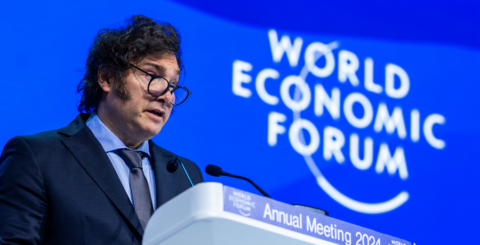
Argentine President Javier Milei speaking at the World Economic Forum gabfest in Davos, Switzerland, January 2024.
Photo by Flickr – World Economic Forum | CC BY-NC-SA 2.0
Argentines witnessed something amazing last week: the government’s first budget surplus in nearly a dozen years.
The Economy Ministry announced the figures Friday, and the government was $589 million in the black.
Argentina’s surplus comes on the heels of ambitious cuts in federal spending pushed by newly-elected President Javier Milei that included slashing bureaucracy, eliminating government publicity campaigns, reducing transportation subsidies, pausing all monetary transfers to local governments, and devaluing the peso.
Milei’s policies, which he has himself described as a kind of “shock therapy,” come as Argentina faces a historic economic crisis fueled by decades of government spending, money printing, and Peronism (a blend of national socialism and fascism).
These policies have pushed the inflation rate in Argentina, once one of the most prosperous countries in Latin America, above 200 percent. Today nearly 58 percent of the Argentine population lives in poverty, according to a recent study.
And Milei rightfully blames Argentina’s backward economic policies for its plight — policies that, he points out, are spreading across the world.
“The main leaders of the Western world have abandoned the model of freedom for different versions of what we call collectivism,” Milei said in a recent speech in Davos. “We’re here to tell you that collectivist experiments are never the solution to the problems that afflict the citizens of the world — rather they are the root cause.”
The revelation that Argentina has done something the US government hasn’t done in more than two decades — run a budget surplus — seems like a newsworthy event.
Yet to my surprise, I couldn’t find a word about it in major US media — not in the New York Times, the Associated Press, the Washington Post, or Reuters. (The New York Sun seems to be the only exception.)
I had to find the story in Australian media! (To be fair, the Agence France Presse also reported the story.)
One could argue that these outlets just aren’t very interested in Argentina’s politics and economics, but that’s not exactly true.
The Associated Press has covered Argentinian politics and Milei extensively, including a recent piece that reported how the new president’s policies were inducing “anxiety and resignation” in the populace. The same goes for Reuters and the other newspapers.
A cynic might suspect these media outlets simply don’t wish to report good news out of Argentina, now that Milei is president.
February 22, 2024
Trump’s crude, threatening rhetoric on NATO’s cheapskates is … right
In The Line, Philippe Lagassé joins all right-thinking people in condemning Donald Trump’s campaign trail threats to not defend NATO’s freeloaders if they’re attacked by, say, Vladimir Putin:
Donald Trump recently called into question the core principle of the North Atlantic Treaty Organization (NATO). As a collective defence alliance, NATO operates on the principle that an attack against one member is an attack against all. This principle is enshrined in Article 5 of the NATO agreement. Although Article 5 allows each ally to respond as they see fit, there’s an understanding that allies have an obligation to defend each other.
On the campaign trail, Trump declared that, if elected, he wouldn’t defend NATO allies if they’ve failed to spend two per cent of their Gross Domestic Product (GDP) on defence. Not only that, he said he’d encourage Russia to attack these allies. As Trump reiterated last week: “Look, if they’re not going to pay, we’re not going to protect, okay?” These comments raised serious concerns within NATO. Jens Stoltenberg, NATO Secretary General, warned that Trump is striking at the underlying logic of the alliance. The Secretary General stressed that “We should not undermine the credibility of NATO’s deterrent”.
What should we make of Trump’s threat? On the one hand, it’s clearly dangerous and evidence that a second Trump presidency could shake the foundations of the alliance. We should rightly be worried and condemn such reckless rhetoric. On the other hand, this is classic Trump. His approach to international politics can best be understood as “mobster diplomacy”. He demands personal loyalty as the head of the “family” of Western liberal democracies. When it comes to trade deals, he echoes Don Corleone in making offers that partners can’t refuse. As for alliances, he sees them as a protection racket. When it comes to NATO allies, his message is simple and direct: “Nice country you have there … pity if something happened to it”.
Allied leaders and academics can protest that the two per cent target isn’t a payment to the United States; it’s a measure of the relative amount allies spend on their own militaries, not a fee they owe Washington. While true, it’s a waste of breath to point this out. Trump and his supporters don’t care. They see most allies as freeloaders who’ve been coasting on American military power for too long. And you know what? They’re not wrong. That’s the rub for those who are understandably horrified by Trump’s comments. Far too many NATO allies, including Canada, have been content let the United States carry a heavy defence spending burden, while we focus on other priorities. That’s what Trump is ultimately getting at here, however menacingly.
Canada has been particularly unwilling to pay its agreed share, actually cutting the military budget late last year while many of our European allies were increasing theirs. We’re habitually the ones who slip out of the room when it’s our turn to buy a round, militarily speaking.
January 8, 2024
Royal Navy to retire their only two LPDs?
Sir Humphrey comments on the recently reported “leak” about several Royal Navy ships:
In an “inspired” leak that seems to fit the Yes Minister definition of a “Confidential Security Briefing”, the Daily Telegraph is reporting that the Royal Navy is to pay off two Type 23 frigates, HMS Argyll and Westminster early in order to find crew for the Type 26 frigates. Assuming this is true, this means that since 2010 the Royal Navy escort fleet will have been cut by 40%. Meanwhile the Times is reporting that the Royal Navy will mothball both LPD’s and no longer have an active amphibious assault ship command platform. This represents a 100% cut to the active assault ship force. The reasons given in both cases seem to boil down to the line that this is about providing sailors to crew the Type 26 frigate. It doesn’t seem to be linked to the rumoured huge budgetary challenges facing the MOD this financial year, which could equally be responsible for this decision.
There are different ways that this information can be interpreted depending on how you look at it. For starters we need to ask the question, why these two ships? The Type 23 force is elderly, with the ships intended for an original 18-year life span, worked hard in the North Atlantic and replaced quickly. They have all been extended in service for up to twice their original design life, while repeated delays to order the Type 26 has meant they are working far harder, and far longer than ever anticipated.
HMS Albion docked at Portsmouth, 26 July 2029.
Detail of a photo by David Crochet via Wikimedia Commons.These are ships designed 40 years ago, with the original Type 23 design dating back to the early 1980s. It is no exaggeration to say that there is almost certainly no one left in active regular service who was serving when the Type 23 design was first conceived. This means the design reflects the 1980s equipment and capabilities and standards – be it in the structure of the messes (large mess decks for junior sailors) or the internal wiring and machinery. While still capable, be in no doubt that these are elderly ships with all the many challenges that this brings. To make up for the many and varied delays to the Type 26, the RN has funded life extension work to the force for some years, fitting new missiles, guns and sonar equipment over time. The modern Type 23 is a far cry from its original design in equipment and capability, but it is still at its heart a 1980s warship.
Westminster had gone into refit in 2022 to begin the process of extending her life out to the late 2020s. The refit for Westminster would have cost around £100m to provide a further 4-5 years of service. while HMS Argyll had undergone the life extension process which would have seen a planned decommissioning in the late 2020s (the precise dates are not clear anymore due to the “odd” MOD decision to currently no longer provide this information on the grounds of operational security).
The LPD force by contrast is in a different position. The two ships Albion and Bulwark were built to replace the venerable Fearless class in the mid 2000s. For most of their career one has been in reserve while the other has been active, the same pattern as occurred with Fearless and Intrepid, where the latter spent years in increasingly poor state in reserve. The timing for this decision makes sense operationally as Albion has come to the end of her commission and was due to pay off into reserve, while Bulwark is still being regenerated in refit and hasn’t yet gone to sea. It would be possible to put both ships in reserve and free up a reasonable amount of sailors in the process.
The question is what is the impact on the fleet itself? Currently the RN probably has a requirement for 19 escort ships – “probably” is used as the MOD has refused to provide a statement on target force numbers in the two most recent Defence Reviews, so this is an assessment based on the 2015 Defence Review. That we have to rely on a near decade old defence review to guess how many escorts the RN plans to have speaks volumes for the manner in which the MOD engages with the taxpayer.
December 28, 2023
The Liberals may be bad at “deliverology”, but they’re world-beaters at pouring money into black holes
Tristin Hopper explains the apparent paradox that the federal government is spending money faster than it can be printed, yet the things the government is responsible for are perennially underfunded:

From back when The Onion was allowed to be funny – https://youtu.be/JnX-D4kkPOQ
This may surprise the average Canadian given that so much of the government is noticeably threadbare and underfunded. Canadians are dying in hospital waiting rooms due to unprecedented shortages in health care. The navy’s so strapped for cash that it can only deploy one offshore patrol vessel at a time. The RCMP’s federal policing is so under-resourced that Parliamentarians are now calling it a threat to national security. And even $600 billion in cumulative debt hasn’t been enough for the Liberals to honour their 2015 campaign promise to ensure universal clean water on First Nations reserves.
It’s popular to blame all this on some easy-to-identify example of government profligacy, such as Ukraine aid, free hotel rooms for refugee claimants or Prime Minister Justin Trudeau’s noted penchant to rack up outsized travel bills. But Canada’s fiscal problems are well beyond anything like that. At the current rate of spending, the cumulative $2.4 billion in military aid that Canada has sent to Ukraine represents less than a month’s worth of new debt.
So where’s all the money going? Below, a cursory guide to how Canada is able to spend so much while seemingly obtaining so little.
Debt servicing just got way more expensive
First, an easy one: The Trudeau government borrowed an obscene amount during the COVID-19 pandemic, and with rising interest rates the treasury is getting hammered with debt-servicing costs.
As recently as 2021, interest charges on federal debt cost $20.3 billion per year. In the current fiscal year, it’s probably going to blow past $46.5 billion. Ottawa now spends about as much on debt management as it does on health care transfers to the provinces.
The phenomenon of pricier debt is not limited to Canada: Virtually every government in the world ran up record-breaking debts during COVID and are now facing the consequences. But if Canada is different, it’s that our rate of pandemic debt accumulation was at least $200 billion higher than it needed to be. And in justifying all this extra spending at the time, Trudeau argued that it was a good time to take out extra debt since “interest rates are at historic lows”.
The corporate welfare is just unbelievable
Canada has a long history of government signing over grants and bailouts to politically connected corporations. As far back as 1972, then NDP Leader David Lewis famously championed the cause of stopping Canada’s “corporate welfare bums”.
But the Trudeau government has taken corporate welfare to new heights. It was only a few years ago that Bombardier was the undisputed champion in collecting federal grants, bailouts and interest-free loans. Over 50 years, according to an analysis by the Montreal Economic Institute, Bombardier received a cumulative “$4 billion in public funds”.
In just the last calendar year, the Trudeau government has signed two subsidy agreements that would dwarf that $4-billion figure several times over. In the spring, both Stellantis and Volkswagen agreed to build EV plants in Ontario in exchange for federal subsidy packages that could cost as much as $18.8 billion (plus another $9 billion from the Ontario government).
And that new $18.8 billion liability on the books doesn’t even account for the massive ramp-up in the corporate welfare everywhere else. To name just a couple: In 2021, Air Canada got a $5.4 billion loan package. And the Trudeau-founded Strategic Innovation Fund gets about $1.5 billion per year in handouts to green energy companies.


